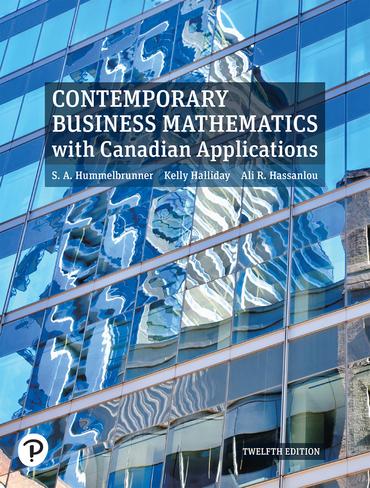Question
Question 1 Bayesian Two-ways Analysis of Variance A company produces a solution to mix with concrete to increase the hardness of the concrete. There are
Question 1 Bayesian Two-ways Analysis of Variance A company produces a solution to mix with concrete to increase the hardness of the concrete. There are five possible types of solution: S1, S2, S3, S4 and S5. The chemist in charge suspected that there may be some batch to batch variation because of slight differences in the hardness of the concrete. To allow for this the five possible types of solution were used on each of three different mixes batches of concrete. The following values of hardness (the units of which are not important) were obtained: Type of Solution Concrete mix S1 S2 S3 S4 S5 1 4.8 6.2 5.4 4.7 6.9 2 5.4 6.9 6.1 5.9 7.4 3 4.9 5.9 5.9 5.7 6.1 The following Bayesian two-ways Analysis of Variance model (that we name the full Bayesian model) is postulated for these data: yij N(ij , precision = ), i = 1, 2, 3, j = 1, . . . , 5 ij = + i + j 1 = 0 1 = 0 N(0, precision = 0.0001) i N(0, precision = 0.0001), i = 2, 3 j N(0, precision = 0.0001), j = 2, . . . , 5 Gamma(shape = 0.001,rate = 0.001) standard deviation = 1 . in which yij is the hardness value for concrete i and type of solution Sj . 1a. Write jags/BUGS code to perform inference about the model. Run your code. Summarize the posterior probability density functions of , i, j and , indicating the numerical values of the posterior means and medians and the 95% credible intervals. What are your results telling you? 1b. Include a graphical representation of the traceplots and posterior densities of i and j in your report and discuss your results. 1c. Include a graphical representation of 95% credible intervals for the parameters i, j and ij , with i = 1, 2, 3 and j = 1, . . . , 5. Based on your results, discuss whether the underlying hardness value is different when a different solution is applied and/or when a different batch of concrete mix is used and report your conclusion with justification.
1d. The chemist in charge thinks that solution S5 should yield a concrete with maximum hardness index. Modify your code to perform posterior inference about the differences between: 5 and 1; 5 and 2; 5 and 3; 5 and 4. In the light of what the chemist thinks, explain what these quantities represent. Produce appropriate graphical representations of your output and provide an interpretation.
Question 2. Consider the following simpler Bayesian model for the concrete hardening solution data and perform inference about its parameters writing appropriate jags/BUGS code. yij N(j , precision = ), i = 1, 2, 3, j = 1, . . . , 5 j = + j 1 = 0 N(0, precision = 0.0001) j N(0, precision = 0.0001), j = 2, . . . , 5 Gamma(shape = 0.001,rate = 0.001) standard deviation = 1 .
2a. Report the numerical values of the posterior means, medians and 95% credible intervals of the parameters.
2b. Include graphical representations of the posterior densities and 95% credible intervals for j for the simpler Bayesian model and briefly comment on them.
2c. Which of the two Bayesian models considered in parts (f) and (j) (the full or the simpler model) do you prefer? Why?
Step by Step Solution
There are 3 Steps involved in it
Step: 1

Get Instant Access to Expert-Tailored Solutions
See step-by-step solutions with expert insights and AI powered tools for academic success
Step: 2

Step: 3

Ace Your Homework with AI
Get the answers you need in no time with our AI-driven, step-by-step assistance
Get Started


